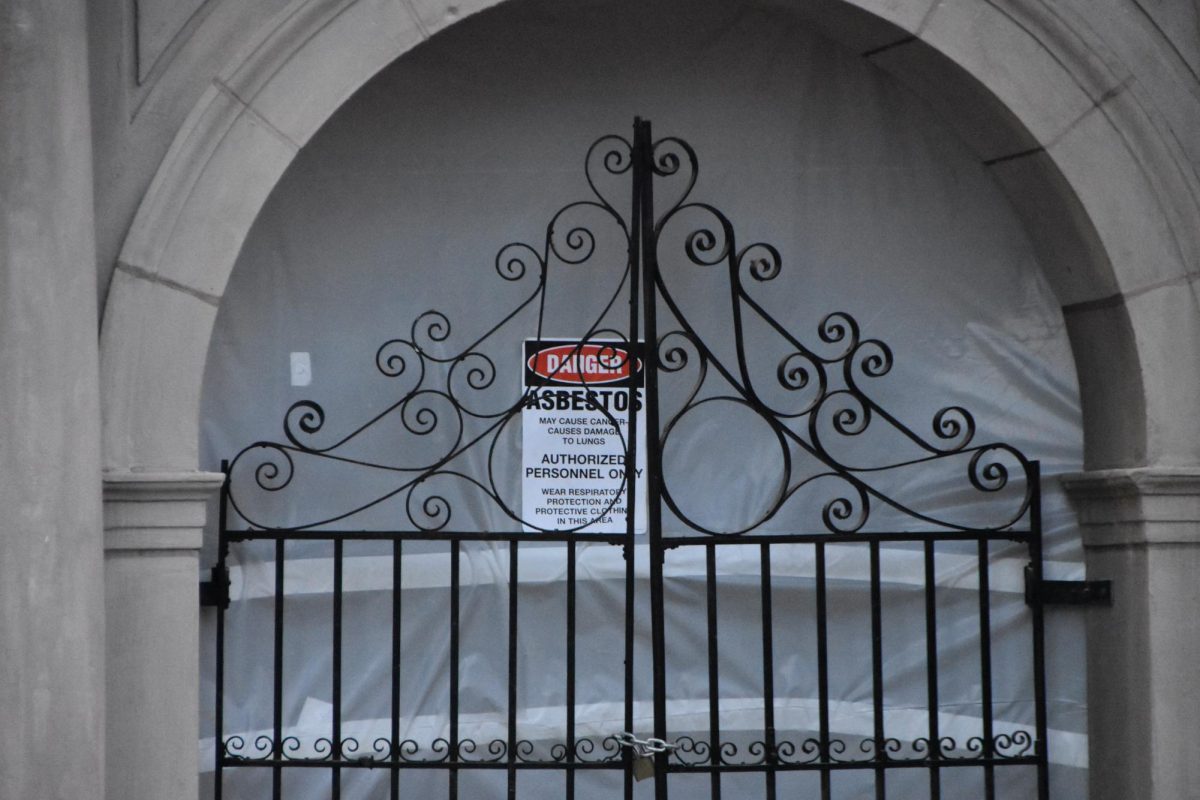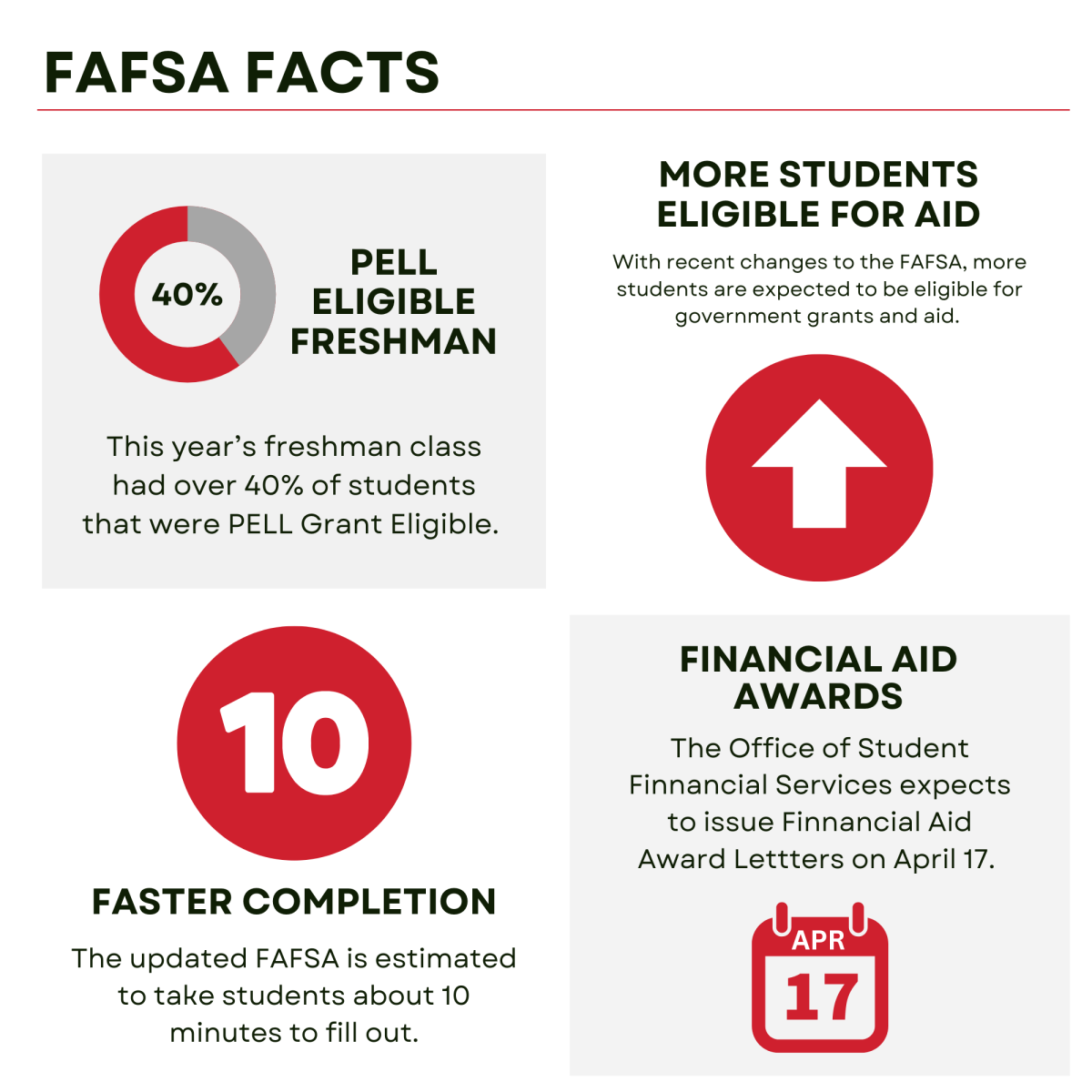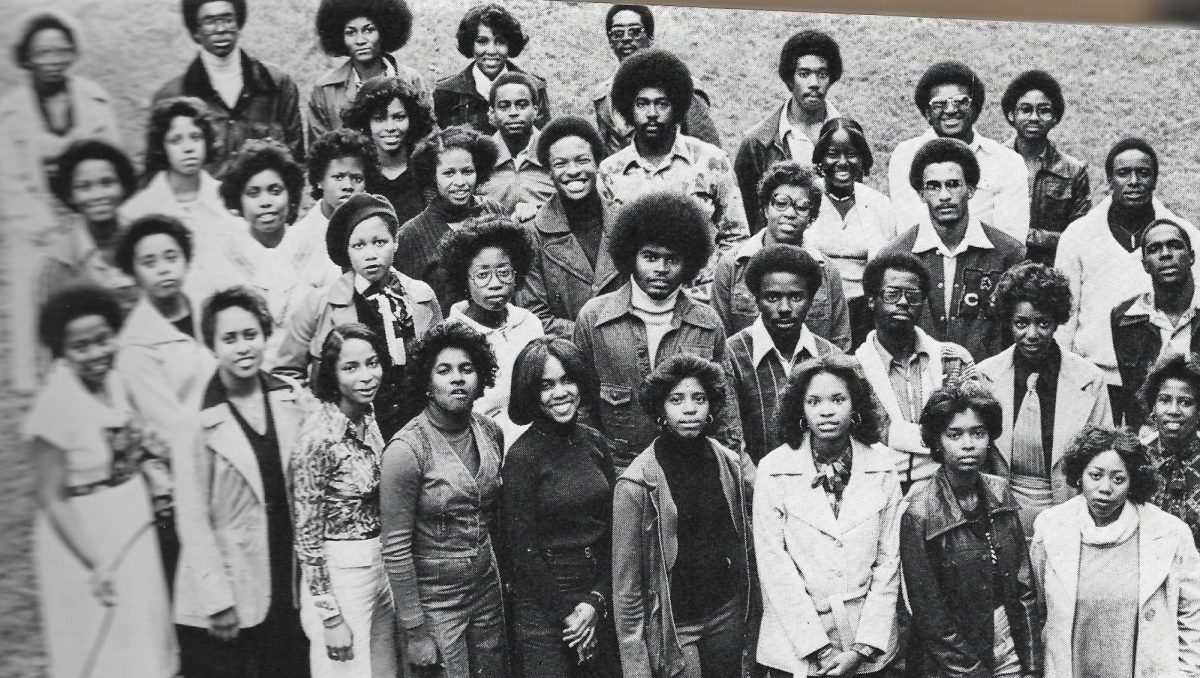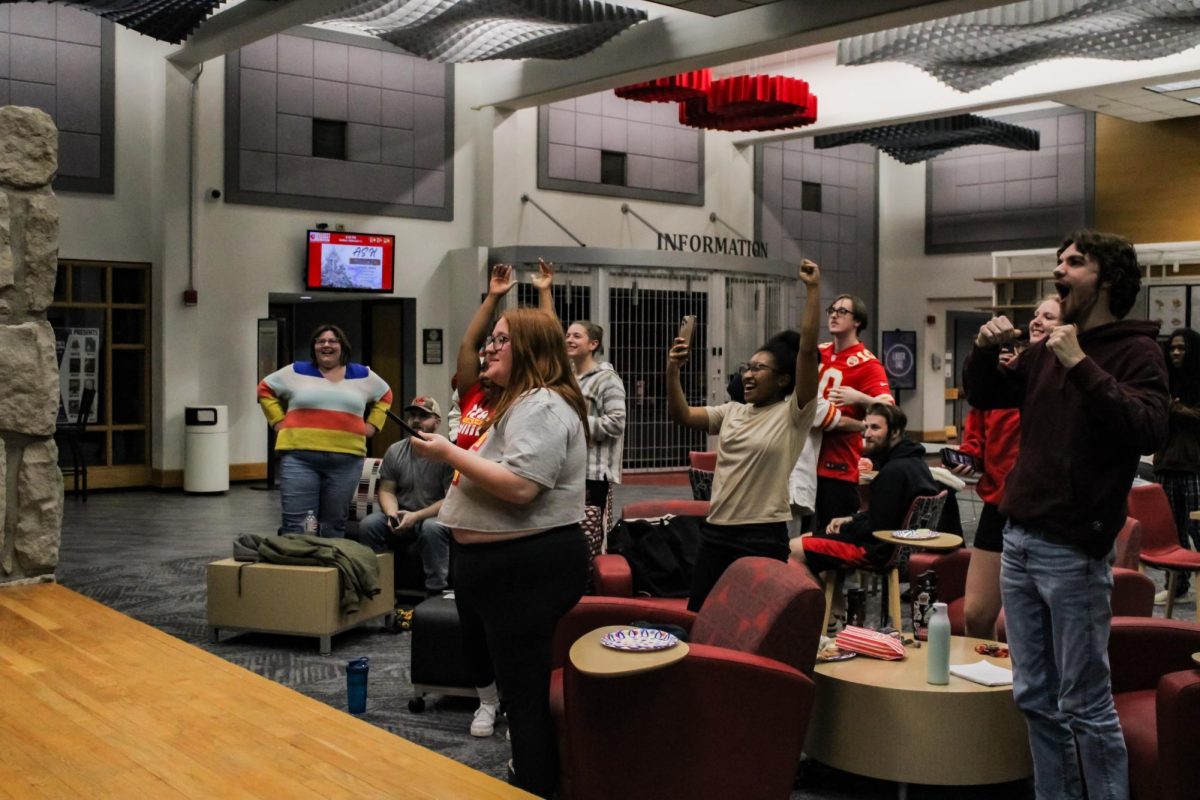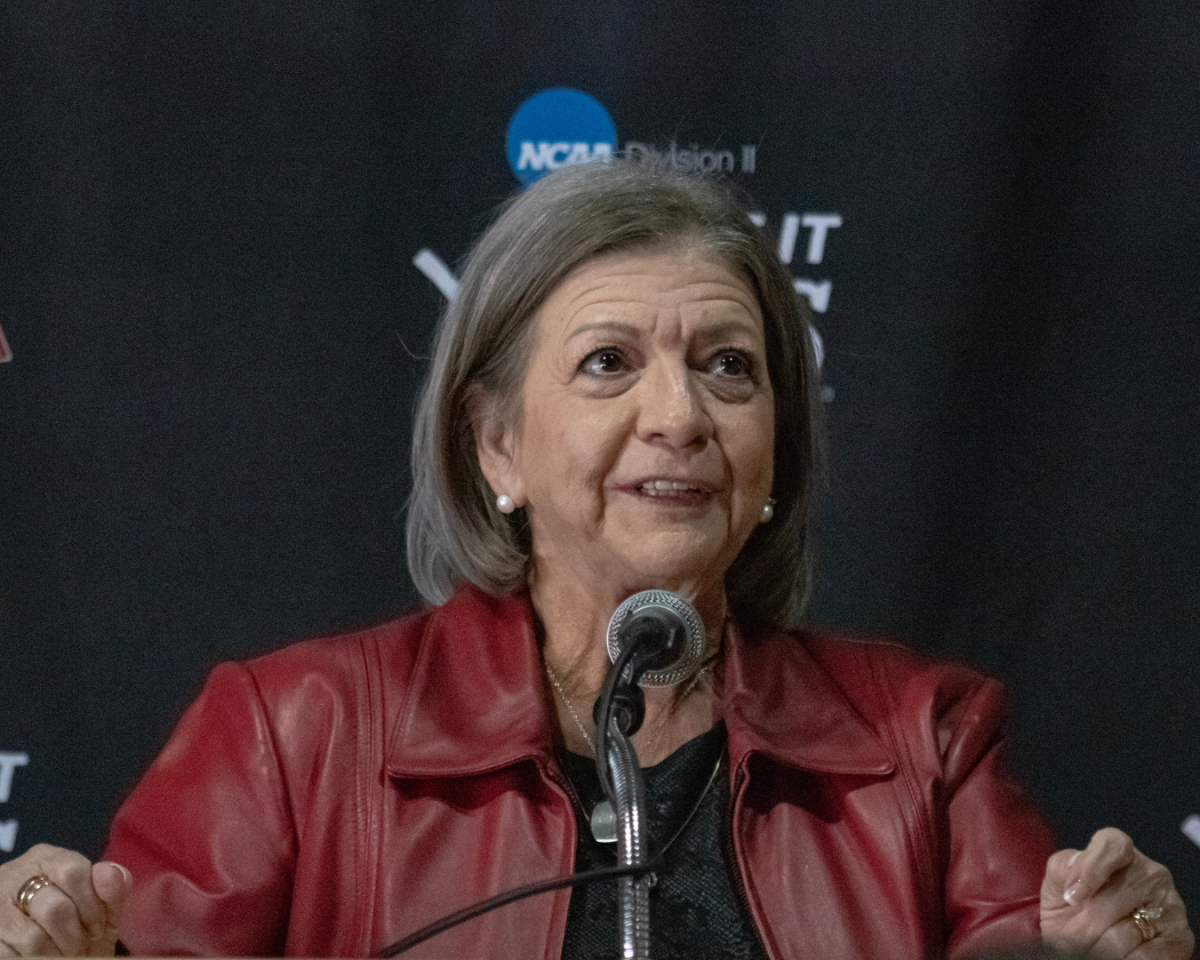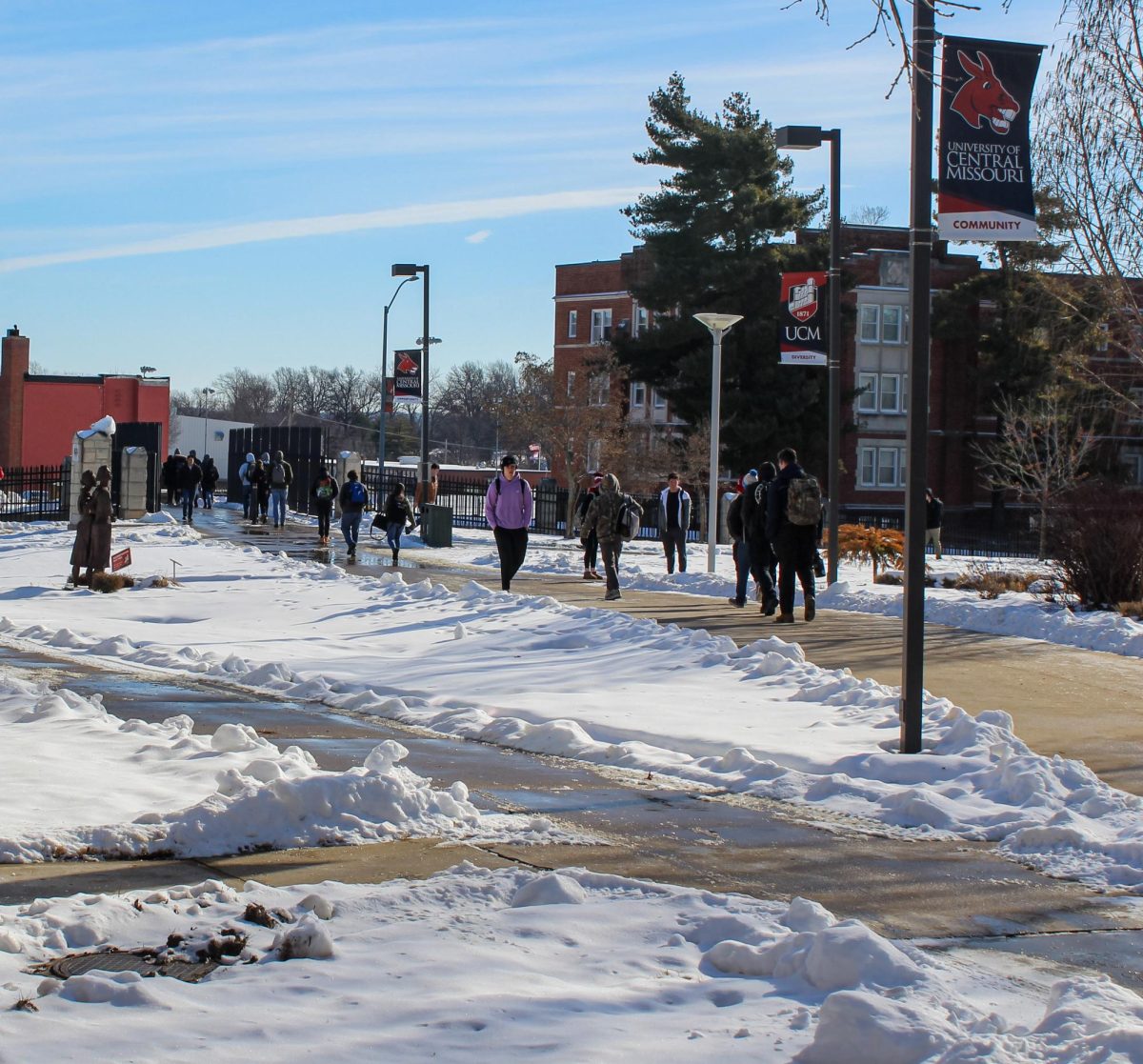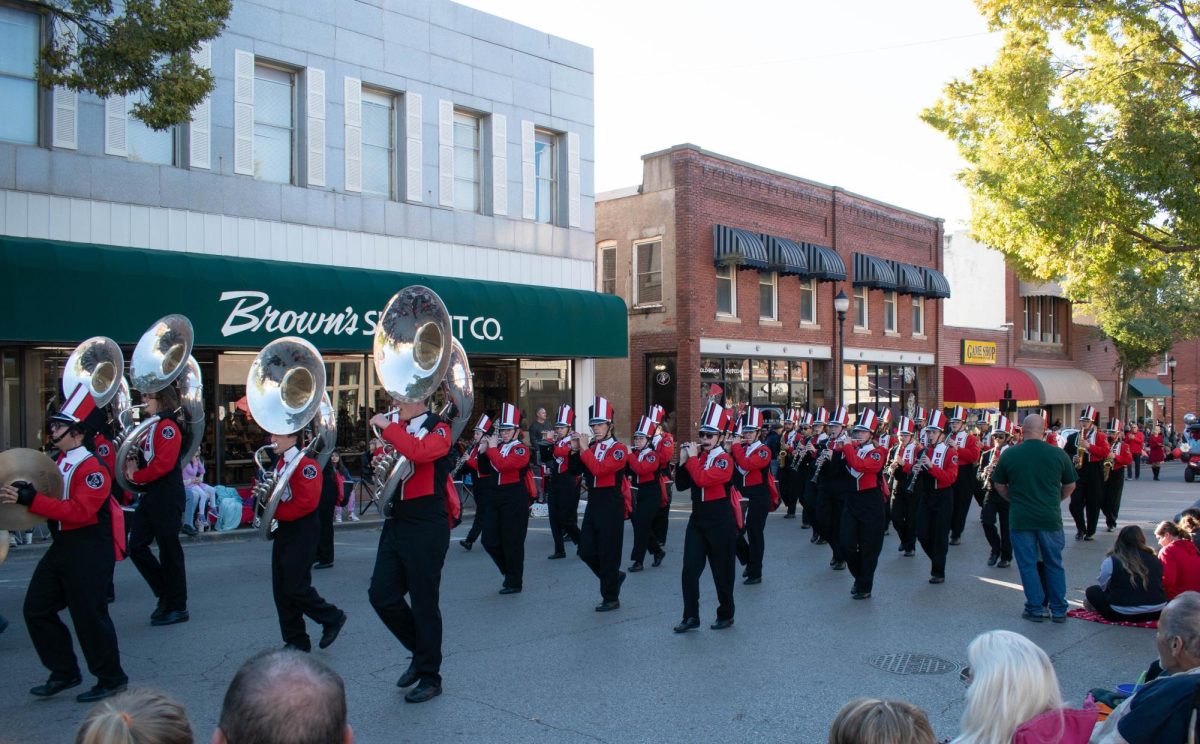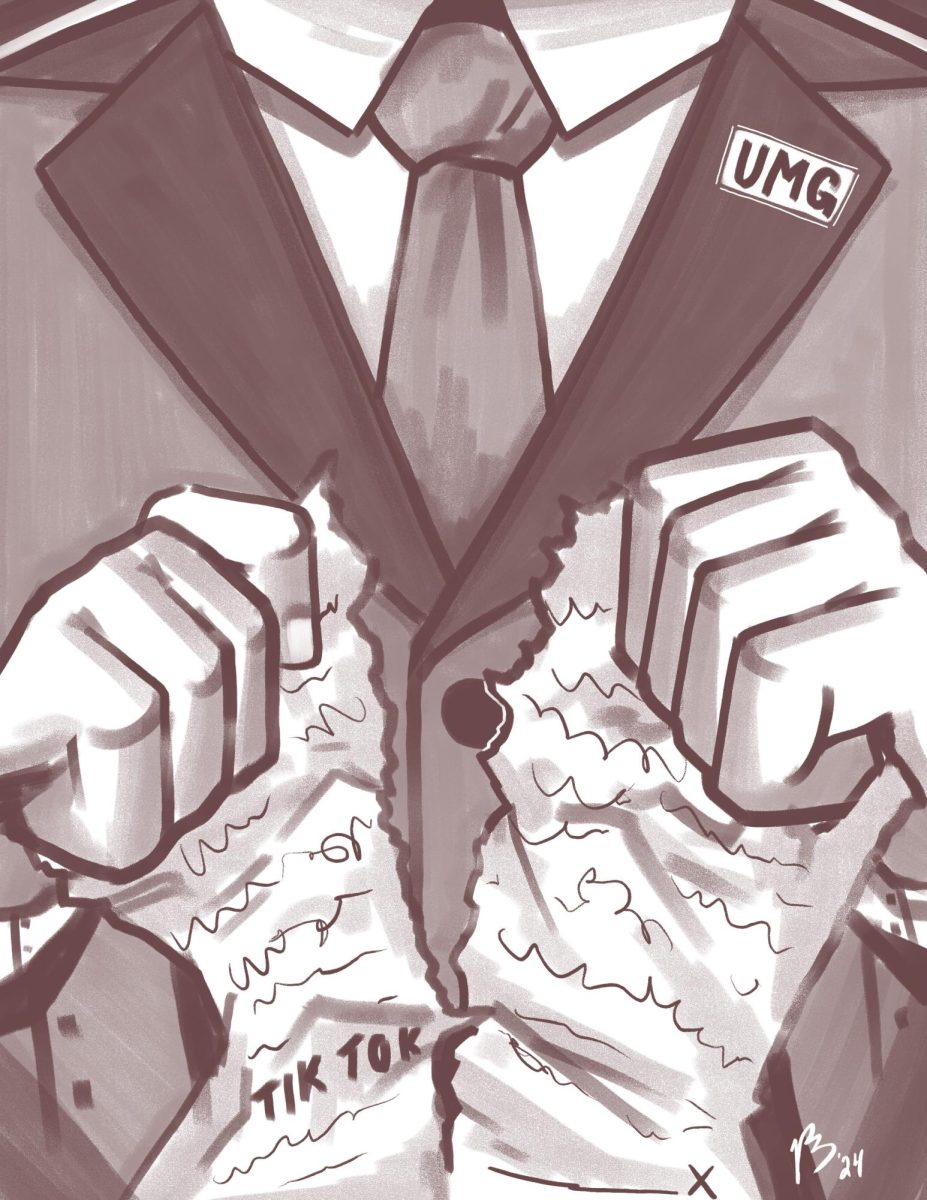The Associated Press
Columbia Daily Tribune, Dec. 20
Offensive and absurd:
Rep. Rick Brattin, R-Harrisonville, has filed an abortion bill Sen. Claire McCaskill calls “offensive and absurd.” Even more damning descriptions would be appropriate.
In the ongoing debate over abortion legislation, it’s important to note this discussion is not about whether a person should have an abortion, a personal decision that should be left to the woman. The ongoing debate is about the role of the state, whether government should prohibit a decision by a woman to choose the procedure.
Lawmakers in Missouri persist in casting Missouri as a leader in efforts to push prohibition beyond the current state of the law. These efforts are repeatedly outlawed, as Brattin’s certainly will be if it gets that far, but occasionally a new interference is allowed to stand. As a result, Missouri has lost almost all its legal abortion clinics.
People who are against the very idea of abortion will think this is a satisfactory outcome, and so it would be if the trend resulted entirely from personal choice. To the degree it results from burdens imposed by state law, it is a misuse of government power.
Brattin’s bill would prohibit an abortion unless the father of the potential child gives notarized permission. The only exception would be in cases of “legitimate rape,” Brattin’s way of trying to avoid dishonest allegations by a pregnant woman. In no way will this language become law, but along the way Brattin & Co. will try to raise money from the “pro-life” crowd and, one can assume, Brattin’s voting constituency will be duly impressed.
Anti-abortion advocates should rely on messages intended to encourage women to choose against abortion. They can push for adoption instead or deliver emotional messages about the living potential baby or anything other than state prohibition. If they cast women who choose abortion as murderers, that will be an unfortunate message but part of the discourse unless it becomes physically threatening.
If allowed to go forward, I fully expect Brattin’s bill to become law in the tilted General Assembly. Then it will be vetoed by Gov. Jay Nixon. If it survives this gantlet, it will be outlawed in court, providing another well-publicized, disappointing example of Missouri legislative thinking.
Republicans in leadership positions will do their party, and their state, a favor by scuttling this misbegotten bill at first opportunity.
___
The Kansas City Star, Dec. 19
Home health workers deserve a raise:
Home health attendants work long hours with heavy lifting and save the public a great deal of money by enabling elderly and disabled people to remain at home instead of moving to institutional settings.
In Missouri, aides who are paid with state Medicaid dollars have been doing this work for an average of $8.60 an hour.
That’s a pathetic wage. Many of the aides are the sole financial providers for their families. They are devoted to their clients and work long hours, making it unfeasible to take a second job.
As a result of negotiations between the workers’ union and the Missouri Quality Home Care Council, a board appointed by the governor, most aides should receive a pay raise, up to $10.15 an hour. As part of the bargaining agreement, the patient will have a say in the precise amount of an aide’s pay. Up until now, that decision has been made by the vendor administering the program.
Even at the top of the new scale, caring for elderly and infirm Missourians won’t be a lucrative profession. It would pay slightly more than $21,000 a year for a 40-hour work week and offer no vacation time or sick leave.
But that does represent a small improvement. The problem is that the aides have yet to see it.
Gov. Jay Nixon’s administration disagrees with the American Federation of State, County and Municipal Employees Council 72, which represents the workers, on the process for implementing the raises.
Lawyers for the administration believe language written into a statute in 2008 requires the raises to be enacted by a formal administrative rule that is vetted by the General Assembly. That process could take six to nine months.
The union thinks the governor has the authority to simply amend contracts with the vendors.
This may have to be a matter for a court to sort out. But whatever happens, it needs to take place on a glide path.
The increase won’t cost the state any extra money. Missouri’s Medicaid program currently pays vendors $15.56 an hour for every patient requiring home health care. While aides’ salaries have remained low, vendors have used about 45 percent of the money for administration and other purposes, such as helping patients afford medical equipment and medications.
Those are important functions, but they shouldn’t be undertaken at the expense of the workers on the front lines. It’s past time for home health aides to receive their raise, modest as it is.
___
St. Louis Post-Dispatch, Dec. 22
Silence of the Rams:
The St. Louis Rams wrapped up their 11th consecutive losing season on Sunday. The good news, such as it is, is that they’ll probably be here another year.
The National Football League, which soft-pedals bad news, apparently has informed the Rams, the Oakland Raiders and the San Diego Chargers that none of them will be permitted to relocate to Los Angeles for the 2015 season. Beyond that, no one is saying.
Meanwhile, Missouri Gov. Jay Nixon told the Post-Dispatch’s Bernie Miklasz on Saturday that six “core principles” would govern the state’s participation in building a new stadium for the Rams. One of them would be no new tax money.
Ah, but old tax money. That’s different. There’s $28 million a year in existing state, city and St. Louis County tax money that’s currently paying off the bonds on the Edward Jones Dome and funding its maintenance. The Rams have deemed that 19-year-old facility inadequate, but there’s some thought that the bonds could be refinanced and flipped toward a new facility without the need for a public vote.
That would be a mistake.
In the early 1990s, $24 million a year ($12 million from the state and $6 million each from St. Louis city and county) could finance a $280 million stadium. On top of that was a $4 million-a-year maintenance lug.
The dome cost $433 million in 2014 dollars, less than half what it costs to build the billion-dollar stately pleasure domes that the NFL’s Kubla Khans teams now decree.
Mr. Nixon’s two-man stadium squad, former Anheuser-Busch president Dave Peacock and attorney Bob Blitz, are said to have been busy trying to persuade the NFL that St. Louis has a viable stadium effort underway. They might even have an architect’s rendering of a new football-cum-soccer stadium to be built on downtown’s north riverfront.
There are a lot of questions about all of this. The biggest one is “What’s the deal, Stan?”
Before St. Louis goes any farther down this road, Rams’ owner Stan Kroenke owes it to the team’s fans and local taxpayers to declare his intentions. You trade in public loyalty and benefit from public dollars, you owe the public some answers.
Otherwise, good luck to Mr. Nixon in trying to build support for this secret plan. Good luck to Mssrs. Peacock and Blitz in trying to persuade the NFL that this clunker will start. Otherwise, good luck trying to sell tickets for a lame-duck season.
Fans invest a lot of loyalty and passion in their sports teams (even some with 11 straight losing seasons), but teams belong to their owners. Subject to league rules, they are free to do with them what they will.
Even Bill Bidwill, whose football Cardinals teams tried St. Louis’ patience for 28 seasons, was open about his intentions before moving his team to Phoenix in 1988. Like Mr. Kroenke, Mr. Bidwill didn’t have much of a reservoir of good will to draw upon when he began talking about a new stadium. But at least he had some roots in St. Louis.
Not so Mr. Kroenke. He has at least seven homes, but unless you count Columbia, Mo., as a St. Louis suburb, none of them local. He has never pretended to be anything but an absentee overlord.
What is known about “Silent Stan’s” intentions come from real estate industry leaks. That’s how it was learned that he bought 60 acres of land in Inglewood, Calif., that could accommodate a stadium. He’s now said to be negotiating for 300 adjacent acres once home to the Hollywood Park racetrack.
The message couldn’t be more clear: Stan Kroenke doesn’t need St. Louis. Moving the team to a new stadium in Los Angeles could double or triple the value of his asset. The smart play (to use a phrase not normally associated with the Rams) is to move to L.A.
But the NFL makes moving a team harder than it used to. League rules say, “League traditions disfavor relocations if a club has been well-supported and financially successful and is expected to remain so.”
But there’s an out-clause “if a club’s viability in its home territory is threatened by circumstances that cannot be remedied by diligent efforts of the club working, as appropriate, in conjunction with the League Office, or if compelling League interests warrant a franchise relocation.”
Hence Mr. Nixon’s “task force’s” diligent efforts to show that St. Louis is still viable. All Mr. Kroenke will have to do is pretend to be interested.
If he and the league would pay two-thirds of the cost, a north riverfront stadium, as part of a larger commercial development, would be good for the city. It might even be worth flipping the city’s $7 million-a-year contribution to the Edward Jones Dome bonds. But $7 million wouldn’t do it, because of escalating maintenance needs at the dome.
The state of Missouri and St. Louis County would have to make the same deal. City and county voters also have the right to sign off on any stadium-financing deal; a back-door bond-flipping deal would be political suicide.
The Missouri Legislature buying this deal is the longest shot of all. The original domed stadium deal in 1992 was so unpopular among outstate legislators that in 2002, they killed a baseball stadium deal because of it. The state is in far worse financial condition than it was in either 1992 or 2002.
Mr. Kroenke could make all of this moot by declaring a heretofore unsuspected love of St. Louis and its football fans. With a fortune estimated by Forbes magazine at $5.8 billion, he could finance a new stadium on his Visa card. Unless and until that happens, his silence speaks volumes.
___
Jefferson City News-Tribune, Dec. 18
Christmas tree safety:
Because a Christmas tree is a symbol of life, its association with tragic house fires is particularly disturbing.
Christmas tree fires are not common, according to the National Fire Protection Association, but they are more likely to be serious when they do occur.
A Wednesday news story reported a Christmas tree is being investigated as the possible cause of an accidental fire that killed a Barnett woman and her 2-year-old daughter.
Don’t be lulled into thinking you will have plenty of warning. A U.S. Fire Administration video shows a Christmas tree catching fire and engulfing a family room in 40 seconds.
And the toll is severe. The fire prevention association reports, between 2003 and 2006, U.S. fire departments responded to an average of 240 house fires each year that started with Christmas trees. Those fires resulted in an annual average of 16 fatalities, 25 injuries and $13.1 million in property damage.
What can you do to minimize the chance of fires caused by Christmas trees?
First, avoid electric failures or malfunctions, which were responsible for nearly half the reported fires, according to the American Christmas Tree Association.
Discard worn or damaged lights, use products approved by UL or ETL/ITSNA, and connect to outlets protected by ground-fault circuit interrupters. In addition, don’t forget to turn off tree lights at bedtime.
Second, do not put Christmas trees too close to a heat source, including fireplaces, radiators and heat vents.
Finally, water the tree regularly and discard it when needles begin to drop. Even a well-watered tree should be discarded after four weeks, according to the Christmas tree association.
While we’re dealing with holiday fire safety, remember December is a peak time for home candle fires. The fire protection group reports 56 percent of them occur when something that can catch on fire is too close to the candle.
A Christmas tree is regarded as a symbol of life in the midst of winter because it can withstand cold, desolate conditions. Preserve that symbolism and protect both family and home by practicing safety this holiday.
Rep. Rick Brattin, R-Harrisonville, has filed an abortion bill Sen. Claire McCaskill calls “offensive and absurd.” Even more damning descriptions would be appropriate.
In the ongoing debate over abortion legislation, it’s important to note this discussion is not about whether a person should have an abortion, a personal decision that should be left to the woman. The ongoing debate is about the role of the state, whether government should prohibit a decision by a woman to choose the procedure.
Lawmakers in Missouri persist in casting Missouri as a leader in efforts to push prohibition beyond the current state of the law. These efforts are repeatedly outlawed, as Brattin’s certainly will be if it gets that far, but occasionally a new interference is allowed to stand. As a result, Missouri has lost almost all its legal abortion clinics.
People who are against the very idea of abortion will think this is a satisfactory outcome, and so it would be if the trend resulted entirely from personal choice. To the degree it results from burdens imposed by state law, it is a misuse of government power.
Brattin’s bill would prohibit an abortion unless the father of the potential child gives notarized permission. The only exception would be in cases of “legitimate rape,” Brattin’s way of trying to avoid dishonest allegations by a pregnant woman. In no way will this language become law, but along the way Brattin & Co. will try to raise money from the “pro-life” crowd and, one can assume, Brattin’s voting constituency will be duly impressed.
Anti-abortion advocates should rely on messages intended to encourage women to choose against abortion. They can push for adoption instead or deliver emotional messages about the living potential baby or anything other than state prohibition. If they cast women who choose abortion as murderers, that will be an unfortunate message but part of the discourse unless it becomes physically threatening.
If allowed to go forward, I fully expect Brattin’s bill to become law in the tilted General Assembly. Then it will be vetoed by Gov. Jay Nixon. If it survives this gantlet, it will be outlawed in court, providing another well-publicized, disappointing example of Missouri legislative thinking.
Republicans in leadership positions will do their party, and their state, a favor by scuttling this misbegotten bill at first opportunity.
___
The Kansas City Star, Dec. 19
Home health workers deserve a raise:
Home health attendants work long hours with heavy lifting and save the public a great deal of money by enabling elderly and disabled people to remain at home instead of moving to institutional settings.
In Missouri, aides who are paid with state Medicaid dollars have been doing this work for an average of $8.60 an hour.
That’s a pathetic wage. Many of the aides are the sole financial providers for their families. They are devoted to their clients and work long hours, making it unfeasible to take a second job.
As a result of negotiations between the workers’ union and the Missouri Quality Home Care Council, a board appointed by the governor, most aides should receive a pay raise, up to $10.15 an hour. As part of the bargaining agreement, the patient will have a say in the precise amount of an aide’s pay. Up until now, that decision has been made by the vendor administering the program.
Even at the top of the new scale, caring for elderly and infirm Missourians won’t be a lucrative profession. It would pay slightly more than $21,000 a year for a 40-hour work week and offer no vacation time or sick leave.
But that does represent a small improvement. The problem is that the aides have yet to see it.
Gov. Jay Nixon’s administration disagrees with the American Federation of State, County and Municipal Employees Council 72, which represents the workers, on the process for implementing the raises.
Lawyers for the administration believe language written into a statute in 2008 requires the raises to be enacted by a formal administrative rule that is vetted by the General Assembly. That process could take six to nine months.
The union thinks the governor has the authority to simply amend contracts with the vendors.
This may have to be a matter for a court to sort out. But whatever happens, it needs to take place on a glide path.
The increase won’t cost the state any extra money. Missouri’s Medicaid program currently pays vendors $15.56 an hour for every patient requiring home health care. While aides’ salaries have remained low, vendors have used about 45 percent of the money for administration and other purposes, such as helping patients afford medical equipment and medications.
Those are important functions, but they shouldn’t be undertaken at the expense of the workers on the front lines. It’s past time for home health aides to receive their raise, modest as it is.
___
St. Louis Post-Dispatch, Dec. 22
Silence of the Rams:
The St. Louis Rams wrapped up their 11th consecutive losing season on Sunday. The good news, such as it is, is that they’ll probably be here another year.
The National Football League, which soft-pedals bad news, apparently has informed the Rams, the Oakland Raiders and the San Diego Chargers that none of them will be permitted to relocate to Los Angeles for the 2015 season. Beyond that, no one is saying.
Meanwhile, Missouri Gov. Jay Nixon told the Post-Dispatch’s Bernie Miklasz on Saturday that six “core principles” would govern the state’s participation in building a new stadium for the Rams. One of them would be no new tax money.
Ah, but old tax money. That’s different. There’s $28 million a year in existing state, city and St. Louis County tax money that’s currently paying off the bonds on the Edward Jones Dome and funding its maintenance. The Rams have deemed that 19-year-old facility inadequate, but there’s some thought that the bonds could be refinanced and flipped toward a new facility without the need for a public vote.
That would be a mistake.
In the early 1990s, $24 million a year ($12 million from the state and $6 million each from St. Louis city and county) could finance a $280 million stadium. On top of that was a $4 million-a-year maintenance lug.
The dome cost $433 million in 2014 dollars, less than half what it costs to build the billion-dollar stately pleasure domes that the NFL’s Kubla Khans teams now decree.
Mr. Nixon’s two-man stadium squad, former Anheuser-Busch president Dave Peacock and attorney Bob Blitz, are said to have been busy trying to persuade the NFL that St. Louis has a viable stadium effort underway. They might even have an architect’s rendering of a new football-cum-soccer stadium to be built on downtown’s north riverfront.
There are a lot of questions about all of this. The biggest one is “What’s the deal, Stan?”
Before St. Louis goes any farther down this road, Rams’ owner Stan Kroenke owes it to the team’s fans and local taxpayers to declare his intentions. You trade in public loyalty and benefit from public dollars, you owe the public some answers.
Otherwise, good luck to Mr. Nixon in trying to build support for this secret plan. Good luck to Mssrs. Peacock and Blitz in trying to persuade the NFL that this clunker will start. Otherwise, good luck trying to sell tickets for a lame-duck season.
Fans invest a lot of loyalty and passion in their sports teams (even some with 11 straight losing seasons), but teams belong to their owners. Subject to league rules, they are free to do with them what they will.
Even Bill Bidwill, whose football Cardinals teams tried St. Louis’ patience for 28 seasons, was open about his intentions before moving his team to Phoenix in 1988. Like Mr. Kroenke, Mr. Bidwill didn’t have much of a reservoir of good will to draw upon when he began talking about a new stadium. But at least he had some roots in St. Louis.
Not so Mr. Kroenke. He has at least seven homes, but unless you count Columbia, Mo., as a St. Louis suburb, none of them local. He has never pretended to be anything but an absentee overlord.
What is known about “Silent Stan’s” intentions come from real estate industry leaks. That’s how it was learned that he bought 60 acres of land in Inglewood, Calif., that could accommodate a stadium. He’s now said to be negotiating for 300 adjacent acres once home to the Hollywood Park racetrack.
The message couldn’t be more clear: Stan Kroenke doesn’t need St. Louis. Moving the team to a new stadium in Los Angeles could double or triple the value of his asset. The smart play (to use a phrase not normally associated with the Rams) is to move to L.A.
But the NFL makes moving a team harder than it used to. League rules say, “League traditions disfavor relocations if a club has been well-supported and financially successful and is expected to remain so.”
But there’s an out-clause “if a club’s viability in its home territory is threatened by circumstances that cannot be remedied by diligent efforts of the club working, as appropriate, in conjunction with the League Office, or if compelling League interests warrant a franchise relocation.”
Hence Mr. Nixon’s “task force’s” diligent efforts to show that St. Louis is still viable. All Mr. Kroenke will have to do is pretend to be interested.
If he and the league would pay two-thirds of the cost, a north riverfront stadium, as part of a larger commercial development, would be good for the city. It might even be worth flipping the city’s $7 million-a-year contribution to the Edward Jones Dome bonds. But $7 million wouldn’t do it, because of escalating maintenance needs at the dome.
The state of Missouri and St. Louis County would have to make the same deal. City and county voters also have the right to sign off on any stadium-financing deal; a back-door bond-flipping deal would be political suicide.
The Missouri Legislature buying this deal is the longest shot of all. The original domed stadium deal in 1992 was so unpopular among outstate legislators that in 2002, they killed a baseball stadium deal because of it. The state is in far worse financial condition than it was in either 1992 or 2002.
Mr. Kroenke could make all of this moot by declaring a heretofore unsuspected love of St. Louis and its football fans. With a fortune estimated by Forbes magazine at $5.8 billion, he could finance a new stadium on his Visa card. Unless and until that happens, his silence speaks volumes.
___
Jefferson City News-Tribune, Dec. 18
Christmas tree safety:
Because a Christmas tree is a symbol of life, its association with tragic house fires is particularly disturbing.
Christmas tree fires are not common, according to the National Fire Protection Association, but they are more likely to be serious when they do occur.
A Wednesday news story reported a Christmas tree is being investigated as the possible cause of an accidental fire that killed a Barnett woman and her 2-year-old daughter.
Don’t be lulled into thinking you will have plenty of warning. A U.S. Fire Administration video shows a Christmas tree catching fire and engulfing a family room in 40 seconds.
And the toll is severe. The fire prevention association reports, between 2003 and 2006, U.S. fire departments responded to an average of 240 house fires each year that started with Christmas trees. Those fires resulted in an annual average of 16 fatalities, 25 injuries and $13.1 million in property damage.
What can you do to minimize the chance of fires caused by Christmas trees?
First, avoid electric failures or malfunctions, which were responsible for nearly half the reported fires, according to the American Christmas Tree Association.
Discard worn or damaged lights, use products approved by UL or ETL/ITSNA, and connect to outlets protected by ground-fault circuit interrupters. In addition, don’t forget to turn off tree lights at bedtime.
Second, do not put Christmas trees too close to a heat source, including fireplaces, radiators and heat vents.
Finally, water the tree regularly and discard it when needles begin to drop. Even a well-watered tree should be discarded after four weeks, according to the Christmas tree association.
While we’re dealing with holiday fire safety, remember December is a peak time for home candle fires. The fire protection group reports 56 percent of them occur when something that can catch on fire is too close to the candle.
A Christmas tree is regarded as a symbol of life in the midst of winter because it can withstand cold, desolate conditions. Preserve that symbolism and protect both family and home by practicing safety this holiday.
Story continues below advertisement


